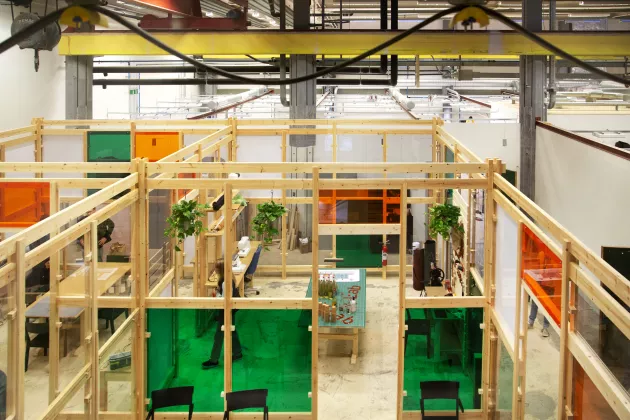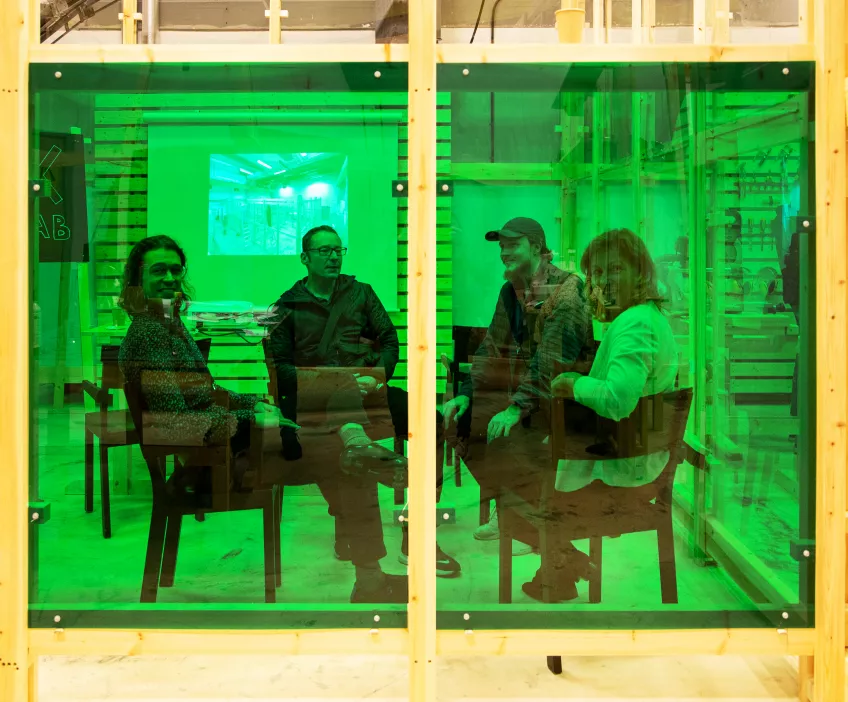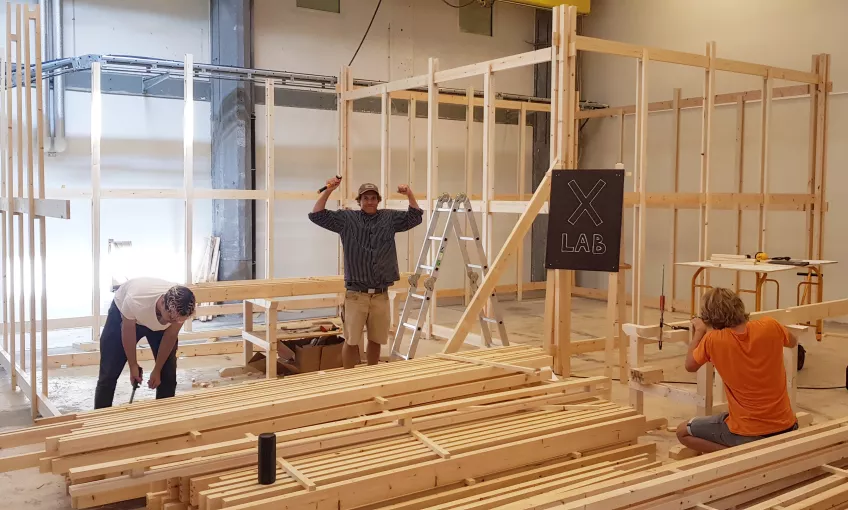For a long time, Lund University has lacked an open meeting place for staff and students to gather and work on their own projects/course work or share knowledge. In response to this, LTH has built up the X Lab, whose activities are based on collaboration and co-creation.
The X Lab is an informal environment aiming to increase the innovation culture among students and staff. The idea is also to increase the interdisciplinary work between faculties. People will be able to come here to work on an idea, business development, prototype production or their own projects, which do not need to be linked to the University. University courses can also utilise the opportunities available at the X Lab.
The space
– We have paid a lot of attention to the interior design of the X Lab to make it a creative environment. The key concepts in the design were fun, inviting, transparent and inspiring. The X Lab is an informal environment where even the interstices are to provide opportunities for spontaneous meetings and conversations/small talk. The casual spaciousness and the playful colour scheme stimulate the visitor’s creativity and provide a sense of welcome and participation, says Claes Dorthé, project coordinator at X-Lab.
Using a modular system made of wood and plexiglass, it is easy to remodel and change the function of the space to suit a specific project or changing needs. The ability to see through the space generates curiosity to investigate and delve further into the jungle of possibilities.
Machines and tools are selected to have a low threshold for users; they are to be easy to start using and to have development potential in terms of techniques and results. Innovative technology is an aspiration, as it offers the opportunity for both physical and digital development, but there is no requirement for technical expertise. The X Lab is an open workshop for everyone and disciplines such as working with textiles, clay, leather and art are also encouraged as they complement the new technology.
Student participation
There is high student involvement in the X Lab and a lot of its activities are based on student participation. Students can apply to join the X Lab’s Core Group. This core group of students (including researchers and staff as well) is a central element of the organisation. Its members will ensure a good reception at the X Lab and provide knowledgeable staff. The students may become participants in projects and start-ups that visit the X Lab. There is sometimes a gap between an idea, design and implementation of a project and that gap can be bridged by the active participation of students with knowledge in various subject areas.
The students come from most faculties and, in this environment, they can find an outlet for their creativity and share knowledge and experiences with one another. They organise workshops, keep the Lab open, guide people, provide safety instructions and ensure that the X Lab is in good order. In exchange for their commitment, they enjoy access to the X Lab around the clock.
Collaborative innovation environment
The X Lab collaborates a lot with other organisations both within and outside LU, offering co-working spaces and exhibition spaces besides machines and workshops. The premises feature spaces for seminars, workshops and meetings, study stations, a café and materials library. The X Lab is the spider in the web, a contact point between various innovation environments where people can come for help, enabling them to move forward with their project, course or issue. The support can address aspects such as finance, logistics concerning safety, access to materials, etc.
The interest shown in the X Lab, both within the University and beyond it, proves that there is a need for a coordinating starting point. The interdisciplinary counterpoint offered by the space provides researchers and students with access to an informal environment, both physical and digital, necessary to enable them to think beyond the boundaries of their own department. The connection between the physical and the digital can also be compared to the increasing understanding we have today for the interaction between theory and practice for a successful project. The parts to be linked to X Lab’s network are departments, incubators, the University’s various labs, suppliers, the City of Lund and the private sector. This provides visitors and users with access to an overview of all the parts of the process when attempting to produce a new product or service, for example.
A space at the University and in the community
The X Lab can be compared to a library environment. It is an environment that is open to all and that offers free information, exchange of knowledge but also access to premises, meeting rooms, machines, tools and technical equipment. The X Lab is a space that dissolves the boundaries within the University and opens itself up towards the city and wider society. There is also a mobile modular unit equipped with machinery and tools, which is to function as an outreach activity. In part to disseminate knowledge about the X Lab, but also to assist at various events, workshops, courses, etc. The carnival in Lund has booked this mobile unit for help with construction.
The X Lab is already up and running in the Northern Apparatus Hall in the M Building, and it will be complete with around 2 000 square metres of space in May 2023 as a living part of the campus.
Read more




